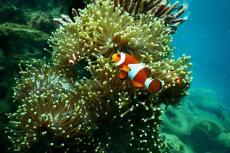Mating sharks and tonic immobility
Shark Tales, in X-ray Magazine's last issue, #63, focused on pain in fish and sharks, and included a short piece on mating behaviour. The violence of the encounter is typical of mating sharks, thus raising the question of the suffering of the female shark during mating.
So I asked leading shark ethologist and behaviourist, Professor Samuel 'doc' Gruber to elaborate. After pointing out how much pain women feel when they give birth, making the point that suffering has no effect on reproduction, he reminded me that sharks evolved their mating behaviours and the physical structures involved, separately from other animals.
Their evolutionary line split off from the branch of vertebrates from which bony fish, and eventually humans evolved, about 400 million years ago, and at that time, sharks already had claspers, which are the penis-like male organ that evolved through a modification of their pelvic fins.
Our ancestors had not yet emerged from the ocean, yet sharks already had claspers and were using internal fertilization. Further, the female shark's skin is twice as thick as the male's skin, and the healing of mating wounds is twice as fast as the healing of other wounds. In some species, the teeth of the male sharks are different from those of the female, too.
Harassment
All of these things are unique to sharks and likely evolved together with the mating behaviour over the aeons. Typically, the male shark harasses the female until she submits to mating, and in the process, she is covered with bites, called mating wounds. By comparison, most modern fish have external fertilisation and utilize various spawning methods.
Gruber described how the female shark fights to try to get away from the male, but eventually gives up when he succeeds in clasping her by her pectoral fin and turning her over. She is then in an apparent hypnotic state. She is relaxed and breathing, and remains still, on her back in a state of tonic immobility, while the male shark fertilizes her. Other males will also mate with her then as is clearly seen in this video of mating grey reef sharks.
Gruber said, “I discovered tonic immobility in sharks and wrote papers on it and I think it's for a very practical purpose. It permits the male to manipulate the female while she remains in a more or less hypnotic state. This is exactly what happens when the female finally gives up. She fights the males to try to get away when they go after her, but eventually, she gives up, because she is turned over into tonic immobility, and she goes into a hypnotic state. I don't think that she is feeling any pain in that state.”
The male has a sack, called the siphon sack, that runs on either side of the midline of his belly, from his anal fin through his pelvic fins to his chest. Before he copulates, he pumps it up with seawater. When he inserts his clasper into the female's cloaca, he transfers his sperm by squirting it in packets, with this store of seawater, and it flushes them right up into the female's oviducts.
The sperm packets stay there while she produces eggs, which are then fertilized, and then descend into the shark's uterus. Female sharks can sire babies from several different fathers.
Gruber explained that the internal fertilization practice of sharks has produced a completely different life history strategy than that of fishes. Sharks operate more like sea turtles and whales than they do like fishes, in their strategy of birth and fecundity and in their maternal investment in their babies.
The next issue of X-ray Magazine will feature the story of Professor Gruber's research, as the creator of the Bimini Biological Field Station and lemon shark laboratory.
Ila France Porcher
author of The Shark Sessions
- Log in to post comments

























